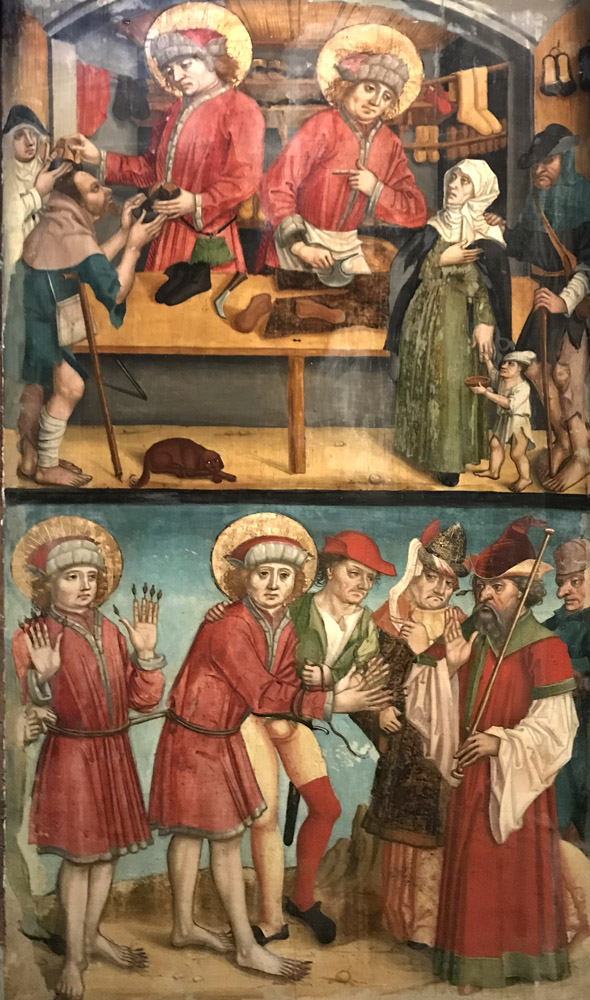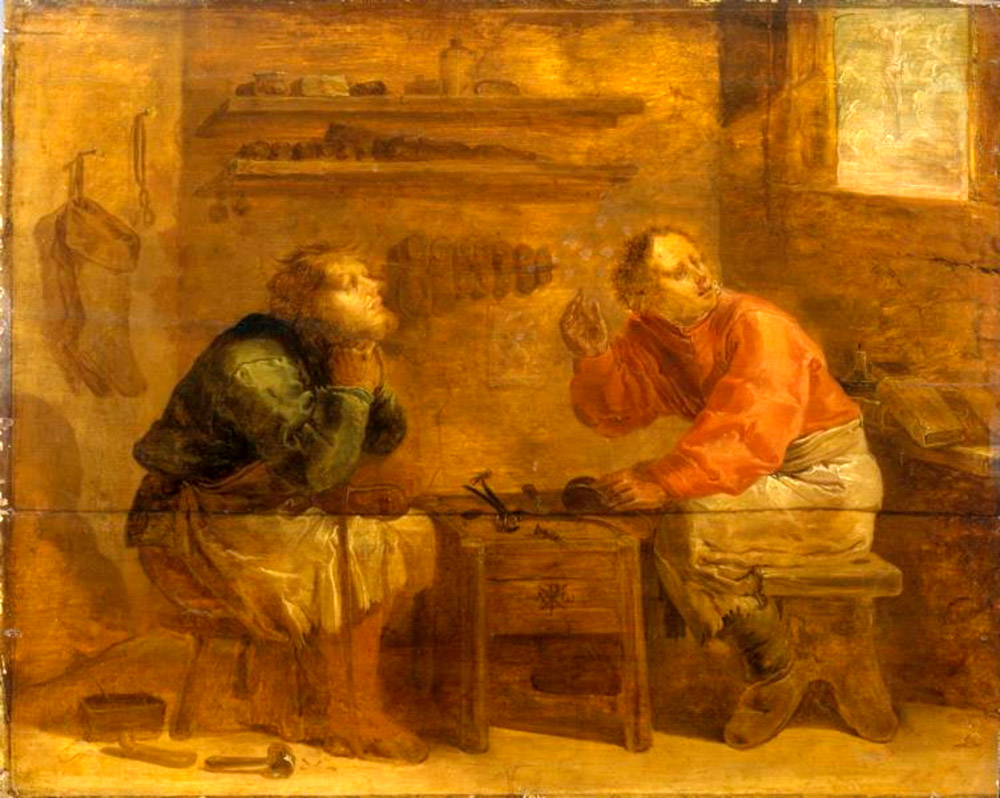THE STORY
Crispin and Crispinian were brothers who went to Soissons, France, in the late 3rd century to preach the gospel. The city authorities forbade residents to provide Christians with any sort of food or shelter, so they supported themselves by making and repairing shoes, doing the work gratis for clients who were poor. As time went by they gained a following among those who came for shoes and stayed for conversation.However, when the Emperor Maximian arrived in the city he was told about Crispin and Crispinian and ordered his chief officer Rictiovarus to bring them to him. When the brothers were brought to him in chains they firmly denounced the Roman gods, so Maximian ordered them tortured to death as a warning to others. Rictiovarus had his men beat the two with clubs, flay their backs, and insert sticks under their fingernails. Then they were tossed into the icy Oise with millstones hanging from their necks.
Through all these torments the brothers coolly recited verses from the psalms that bespoke their reliance on God's protection. Accordingly, God preserved them from every harm. The sticks flew out of their fingernails and lodged in the torturers' bodies; the millstones fell away while they swam comfortably to shore. Finally Rictiovarus had a great fire built beneath a cauldron of boiling oil, but when put into the cauldrom the saints simply kept up with their prayers and felt the heat not at all. This drove Rictiovarus to such an insane rage that he threw himself into the fire and perished.
Learning of all this, Maximian ordered the brothers beheaded. Their bodies were then set out to be eaten by animals, but God preserved them and the next day a poor man and his aged sister buried them.
THE IMAGES
The first picture at right exemplifies the two types of narrative images of the saints. The first type will show them in their workshop making shoes and distributing them to the poor. The second type pictures one or more of the tortures recounted in the medieval legend.Most portrait images also set the brothers in the shop with shoes and tools as their attributes, as in the second picture at right. A few simply present them in a neutral background with an attribute, as in the third picture.
CRISPIN AND CRISPINIAN IN ENGLISH CULTURE
There was a belief in England that the brothers had escaped the persecution and pursued their shoemaking trade in a house in Faversham, Kent. The house was a pilgrimage destination as late as the 17th century. The two saints' association with England and English patriotism is attested by the king's rousing "band of brothers" speech before the battle of Agincourt in Shakespeare's Henry V. The speech mentions "St. Crispian" six times and ends thus:- And gentlemen in England now abed
- Shall think themselves accursed they were not here,
- And hold their manhoods cheap whiles any speaks
- That fought with us upon Saint Crispin's day.
THE LEGEND AND HISTORY
Although the passion narrative defies credulity, not least because of its adoption of details from the better known story of Cosmas and Damian, Butler (IV, 196) considers the fact of Crispin and Crispinian's martyrdom to be genuinely historical because it is listed in the 5th-century Martyrologium Hieronymianum (Acta Sanctorum, November vol. 2 part 1, 135).
Prepared in 2022 by Richard Stracke, Emeritus Professor of English, Augusta University.
HOME PAGE

The two saints making shoes and being brought before Maximian in chains and with sticks pushed under all their fingernails. (See the description page.)

Portrait images typically show the brothers in their workshop. (See the description page.)

St. Crispin holding a shoe and a halberd as his attributes. (See the description page.)
ATTRIBUTES
- Shoes and the tools for making them
- Axe or halberd
- Martyred late 3rd century
- Feast day: October 25
BIOGRAPHY
- Butler, IV,197-98.
- Acta Sanctorum, October vol. 11, 495-540.